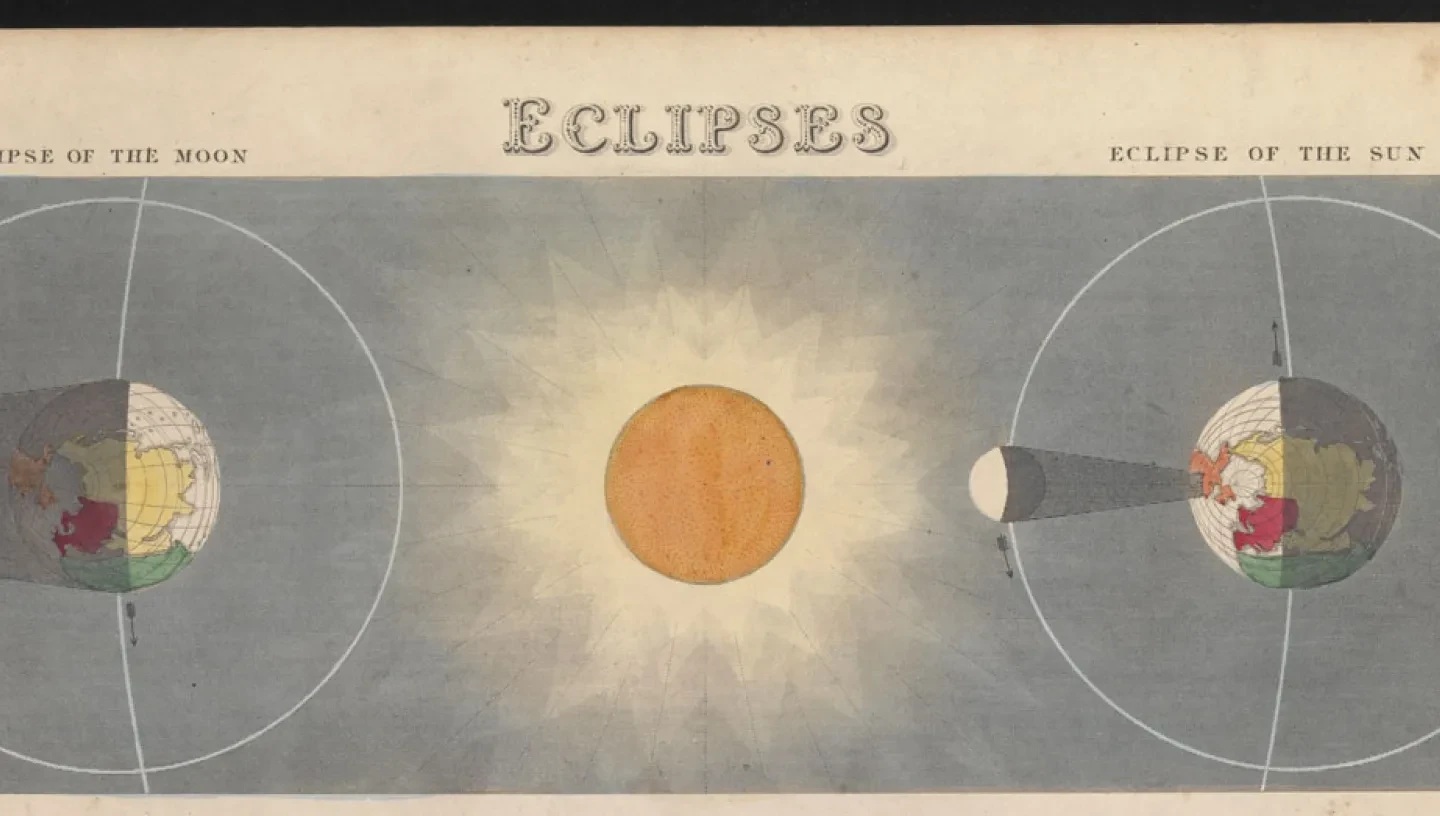
1919 solar eclipse
A solar eclipse is a spectacular event in of itself, but this event was particularly important, both for scientists of the time and of the present.
What is a solar eclipse?
Most of the major objects in our solar system orbit in the same plane. In other words, the solar system is very flat, with each of the orbits of many of the planets, moons and other bodies roughly lining up with one another. It’s therefore no surprise that every now and then these objects perfectly line up with one another.
There is no more spectacular example of that than a total solar eclipse. The Moon passes directly between the Earth and Sun, casting its shadow upon our world. Observers in the darkest part of this shadow would see the Sun’s light being all but completely blocked out. It is as though day very briefly turns to night.
By coincidence, the Moon is 400 times smaller than the Sun and 400 times closer to us than the Sun. This means its relatively small body can cover the entire Sun's surface.
Find out more about solar eclipses
Why are solar eclipses important to astronomers?
Solar eclipses also provide an opportunity to observe parts of the Sun not readily available at other times.
While the Sun’s “surface” is covered by the Moon during a total solar eclipse, its much fainter atmosphere extends far further. Ground-based observers could use these eclipses as a chance to see these faint and usually drowned-out parts of the Sun in detail.
However, these short-lived and geographically inconvenient events are no longer our only insight into this field.
The development of solar probes and solar coronagraph technology has given us new opportunities to explore the Sun whenever we want.
Solar coronagraph technology allows the Sun's atmosphere to be observed outside of an eclipse.
What made the 1919 solar eclipse different?
It is due to the scientists whose interests ventured far further than the Sun and the Moon that the 1919 solar eclipse is one to be remembered.
In 1915, Albert Einstein published what may well be his greatest, and certainly is one of his best-known, works: his Theory of General Relativity. This was in part an attempt to understand the nature of gravity, the mysterious force responsible for much of the structure of our Universe. It would eventually revolutionise the way scientists understood the Universe, but this had yet to occur.
Scientists were reluctant to move away from Sir Isaac Newton’s view of gravity, which had dominated for over 200 years.
The problem was that experimentally, their predictions were similar, despite being fundamentally different.
In other words, an experiment to test gravity would give extremely similar results whichever view of gravity was correct. This made designing a test to separate them very difficult.
However, in 1917, Sir Frank Watson Dyson, the Astronomer Royal of the time, formulated an experiment that could do it. In both Newton’s and Einstein’s views, the path of light can be bent by gravity. However, the difference in this bend in the two views is noticeable, with Einstein predicting twice the deflection of Newton’s view. To see this deflection requires a big object with a lot of mass to bend the light around it. Dyson suggested that the Sun might be seen to do this to background stars during an eclipse.
Sir Arthur Eddington was Secretary of the Royal Astronomical Society and a great believer in Einstein’s theory. He organised two groups of astronomers, sending them on expeditions to the parts of the world expected to see the eclipse on 29th May 1919.
These groups took photographs during totality. They measured the deflection of the stars from their “true” positions.
The angle they measured from where the stars should be to where they appeared to be during the eclipse was a little under 2 arcseconds. This is 1/1800th of a degree or 0.00015% of a full circle. This is a tiny deflection, but it was enough to show that Einstein was right.
This was one of the first key pieces of evidence to show Einstein’s view could trump Newton’s. It paved the way to it becoming the dominant theory.
This in turn led to the discovery of gravitational time dilation, gravitational lenses, black holes and most recently gravitational waves.
These results are all built upon a theory tested with the 1919 total solar eclipse.
Find out more about the 1919 solar eclipse at our talk
The Royal Observatory is open daily from 10am
Visit the Royal Observatory Greenwich to stand on the historic Prime Meridian of the World, see the home of Greenwich Mean Time (GMT) and explore your place in the universe at London’s only planetarium.